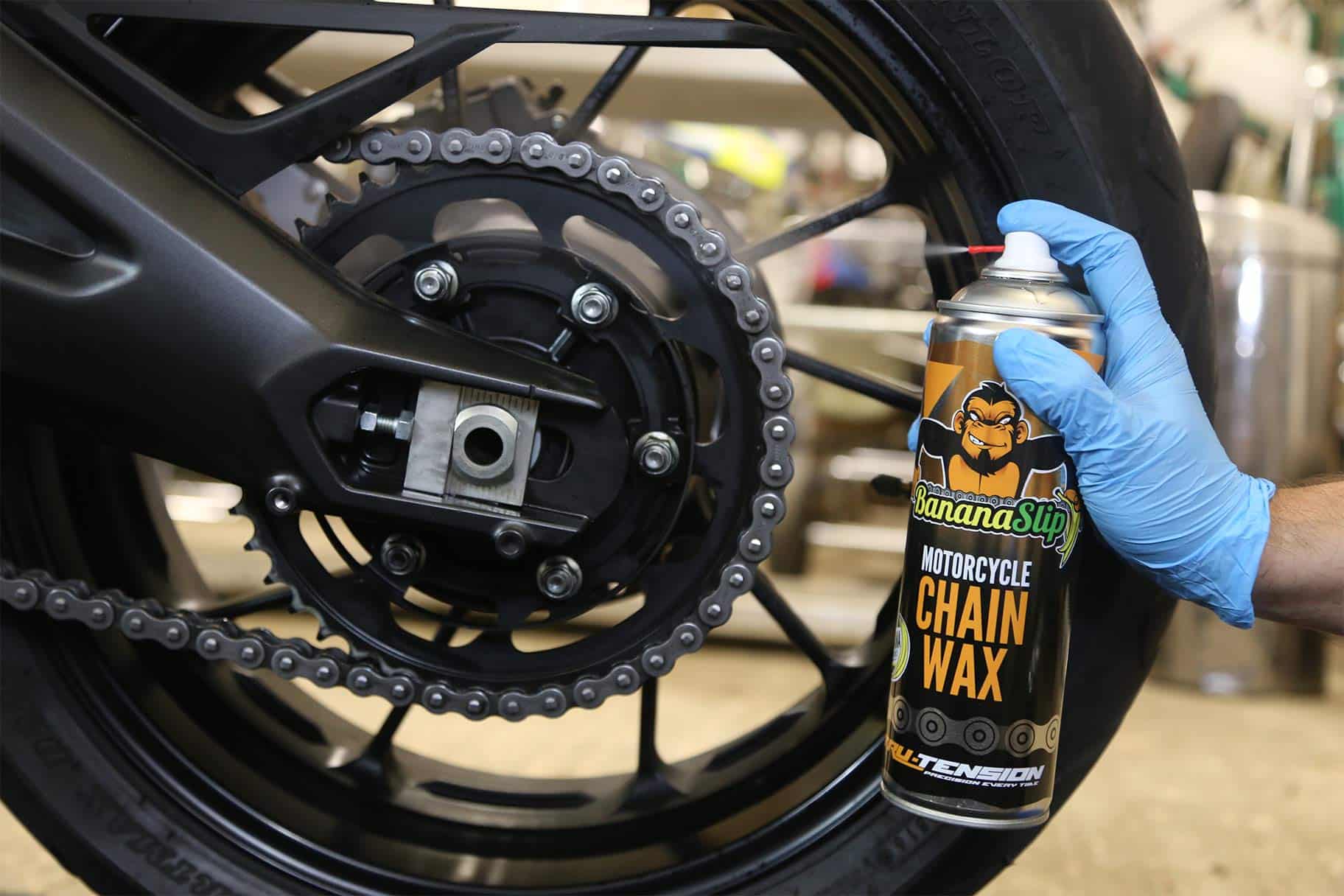Choosing between bike grease and lube can be confusing. Both play crucial roles in bike maintenance.
Bike grease and lube serve different purposes, yet both are essential for keeping your bike running smoothly. Grease is thicker and used on bearings and threads to prevent wear and rust. Lube, on the other hand, is lighter and designed for the chain and moving parts to reduce friction and enhance performance.
Understanding the differences of Bike Grease Vs Lube helps you maintain your bike better, ensuring it lasts longer and performs well. This comparison will help you decide when to use each product, ensuring your bike stays in top condition. Keep reading to discover the key differences and benefits of bike grease and lube.

Credit: www.tru-tension.com
Table of Contents
Importance Of Bicycle Maintenance
Proper bicycle maintenance is crucial for a smooth ride. Bike grease and lube each serve unique purposes. Grease is used for bearings and threads, while lube keeps the chain running smoothly.
Maintaining your bicycle is crucial. It ensures smooth rides and safety. Regular care prevents unexpected breakdowns. Two essential components are grease and lube. Both play vital roles in bike maintenance. Let’s explore their importance.
Enhancing Performance
Grease and lube enhance bike performance. Grease reduces friction in bearings. It ensures smooth wheel rotation. Lube, on the other hand, keeps the chain moving freely. It reduces wear and tear. Proper application of both leads to a seamless ride. Your bike responds better to your inputs.
Prolonging Lifespan
Proper use of grease and lube prolongs your bike’s lifespan. Grease protects metal parts from rust. It acts as a barrier against moisture. Lube keeps the chain in top condition. It prevents rust and corrosion. Regular maintenance saves you money. You avoid costly repairs and replacements. Your bike stays in excellent shape for years.

Credit: pedalchile.com
Understanding Bike Grease
Maintaining a bike requires the right products. One key product is bike grease. Grease helps keep the bike running smoothly. It reduces friction and wear on parts.
What Is Bike Grease?
Bike grease is a thick lubricant. It is made from oils and soap. This mixture creates a sticky substance. It stays in place and protects bike parts. The grease also prevents rust and corrosion.
Common Uses Of Grease
Grease is used on many bike parts. It is applied to bearings and pedal threads. It is also used on seat posts and headsets. Grease helps these parts move smoothly. It also ensures they do not seize up.
Understanding Bike Lube
Proper bike maintenance involves using the right products. Bike lube is one of these essential products. This section will explain what bike lube is and its common uses. Knowing this helps in choosing the right product for your bike.
What Is Bike Lube?
Bike lube is a special liquid. It reduces friction on bike parts. It keeps the bike running smoothly. There are different types of lubes for different conditions. Some are for dry weather, and some are for wet weather.
| Type | Conditions |
|---|---|
| Dry Lube | Best for dry, dusty conditions. |
| Wet Lube | Best for wet, muddy conditions. |
Common Uses Of Lube
Bike lube has several common uses. It is mainly used on the chain. This keeps the chain moving smoothly. It also reduces wear and tear. Here are some common uses:
- Chain lubrication: Keeps the chain smooth and quiet.
- Derailleur lubrication: Ensures smooth shifting of gears.
- Brake lever lubrication: Keeps the brake levers responsive.
- Cable lubrication: Reduces friction in cables.
Regularly applying lube to these parts can extend the life of your bike. It also enhances performance. A well-lubed bike rides much better.
Types Of Bike Grease
Choosing the right bike grease ensures smooth rides and long-lasting parts. Different types of grease suit specific needs and conditions. This section covers various types of bike grease.
Lithium Grease
Lithium grease is popular for its versatility and effectiveness. It works well in many bike parts, including bearings, pedals, and bottom brackets. This grease resists high temperatures and water. It also prevents rust and corrosion. Many cyclists prefer lithium grease for its affordability and wide availability.
Ceramic Grease
Ceramic grease offers advanced lubrication properties. It contains microscopic ceramic particles that reduce friction. This grease is perfect for high-performance bikes. It lasts longer than other greases and enhances the smoothness of moving parts. Ceramic grease is ideal for cyclists who want top-tier performance.
Waterproof Grease
Waterproof grease is essential for wet conditions. It protects bike parts from water damage and rust. This grease is thick and sticky, ensuring it stays in place. Use waterproof grease for bikes often exposed to rain or muddy trails. It keeps your bike in good condition, even in harsh weather.
Types Of Bike Lube
Choosing the right bike lube can keep your bike running smoothly. There are different types of lubes, each designed for specific conditions. Understanding these can help you make the best choice for your bike.
Wet Lube
Wet lube is perfect for wet and muddy conditions. It stays on the chain longer and provides excellent protection against rust and corrosion. This type of lube is thicker and stickier than others. It keeps the chain well-lubricated even in heavy rain or snow.
However, wet lube can attract more dirt and grime. It’s essential to clean the chain regularly to avoid buildup. Here is a quick comparison of wet lube features:
| Feature | Wet Lube |
|---|---|
| Best For | Wet, muddy conditions |
| Protection | Excellent against rust |
| Consistency | Thick and sticky |
Dry Lube
Dry lube works best in dry and dusty conditions. It’s thinner and less sticky than wet lube. This type of lube reduces friction and keeps the chain clean. It helps your bike perform better in dry weather.
Dry lube doesn’t attract much dirt, making it easier to maintain. However, it might not last as long in wet conditions. Here’s a summary of dry lube features:
| Feature | Dry Lube |
|---|---|
| Best For | Dry, dusty conditions |
| Protection | Good, but less than wet lube |
| Consistency | Thin and less sticky |
Ceramic Lube
Ceramic lube is a premium option for cyclists. It contains tiny ceramic particles that reduce friction. This type of lube is suitable for both wet and dry conditions. It offers better performance and longevity.
Ceramic lube keeps the chain smooth and quiet. It’s more expensive but provides excellent protection and efficiency. Here’s a look at ceramic lube features:
| Feature | Ceramic Lube |
|---|---|
| Best For | All conditions |
| Protection | Superior |
| Consistency | Medium |
When To Use Grease
Understanding when to use grease on your bike can extend its lifespan and improve its performance. Grease and lube serve different purposes, and knowing when to apply each can keep your ride smooth and efficient. Below, we discuss the best times to use grease, specifically for bearings and threads.
Grease For Bearings
Bearings play a crucial role in the smooth operation of your bike. They reduce friction, allowing wheels and pedals to spin freely. Applying grease to bearings is essential for maintaining their efficiency. Use grease to:
- Reduce friction between moving parts
- Prevent wear and tear on the bearings
- Protect against rust and corrosion
Grease forms a thick barrier, keeping water and dirt out. This protection ensures that bearings last longer and perform better. When you notice noise or resistance in your wheels or pedals, it’s time to apply grease.
Grease For Threads
Grease is also vital for threads on your bike. Threads are found on bolts, screws, and other fasteners. Applying grease to threads can:
- Make assembly and disassembly easier
- Prevent seizing and galling of threads
- Ensure a tight, secure fit
Grease provides lubrication, reducing the risk of stripped threads. This ensures that bolts and screws can be tightened properly without damaging the bike. If you find it hard to remove bolts or screws, grease can help.
Below is a quick reference table on when to use grease:
| Application | Purpose | Benefits |
|---|---|---|
| Bearings | Reduce friction, prevent wear | Longer lifespan, smoother operation |
| Threads | Ease assembly, prevent seizing | Secure fit, avoid damage |
When To Use Lube
Bike maintenance is crucial for a smooth ride. One essential aspect is knowing when to use lube. Lube ensures your bike parts function properly. It reduces friction, prevents rust, and extends the life of your bike components.
Lube For Chains
Chains are the most important part of your bike. They need regular lubing. Apply lube to the chain every 100-150 miles. Lube keeps the chain running smoothly. It reduces wear and tear. Clean the chain before applying lube. Use a brush or a rag for cleaning. Apply the lube evenly. Wipe off excess lube to avoid dirt attraction.
Lube For Derailleurs
Derailleurs help in shifting gears. They also need lube. Apply lube to the pivot points. This ensures smooth gear changes. Use a small amount of lube. Excess lube can attract dirt. Clean derailleurs before lubing. Use a soft brush for cleaning. Ensure all parts are dry before applying lube. Regular lubing extends the life of your derailleurs.

Credit: www.youtube.com
Tips For Effective Maintenance
Maintaining your bike is crucial for its performance and longevity. Grease and lube play vital roles in this process. Using them correctly ensures smooth rides and fewer repairs. Here are some tips for effective maintenance.
Cleaning Before Lubricating
Always clean your bike before applying grease or lube. Dirt and grime can cause wear and tear. Use a degreaser to remove old grease and lube. A clean surface ensures better adhesion of new lubricants.
Follow these steps:
- Rinse your bike with water.
- Apply a bike-specific degreaser.
- Scrub with a brush to remove dirt.
- Rinse again and let it dry completely.
Proper Application Techniques
Proper application of grease and lube is essential. Use the right amount to avoid wastage and ensure protection.
For bike chains, use a drip lube:
- Apply one drop per link.
- Let it sit for a few minutes.
- Wipe off excess lube with a cloth.
For bearings and bolts, use grease:
- Apply a small amount on the part.
- Spread it evenly using a brush or finger.
- Ensure no excess grease is left.
Remember, over-lubricating can attract more dirt. Use just enough to cover the parts.
Frequently Asked Questions
What Is The Difference Between Bike Grease And Lube?
Bike grease is thicker and used for bearings and threads. Lube is thinner and used for chains and moving parts.
When Should I Use Bike Grease?
Use bike grease on bearings, threads, and bolts. It prevents rust and ensures smooth operation.
When Should I Use Bike Lube?
Use bike lube on your chain and moving parts. It reduces friction and prevents wear.
Can I Use Grease Instead Of Lube?
No, grease is too thick for chains. It attracts dirt and can cause damage.
Conclusion
Choosing between bike grease and lube depends on your bike’s needs. Grease works best for bearings and threaded parts. Lube, on the other hand, keeps your chain running smoothly. Keep your bike in top shape by using both correctly. Regular maintenance ensures a longer lifespan for your bike.
Always clean before applying grease or lube. This simple habit prevents buildup and damage. Happy biking!

